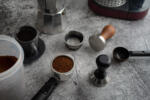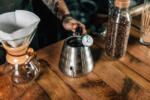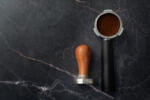So, you want to go to Italy? Awesome! There are many things to do in this beautiful land, and you won’t be forgiven if you don’t taste their coffee. Italians are specific about their coffee, and while you can use any name to order coffee, it is best to order the Italian way.
An Introduction to Coffee the Italian Way
Traveling to Italy is a treat for all those who love anything related to consuming quality food, wine and beverages and coffee is elevated to an art form here. The country that gave Starbuck’s founder Howard Schultz the inspiration that sparked a coffee phenomenon serves coffee with as much skill and attitude as the typical Italian uses in artfully tying a scarf.
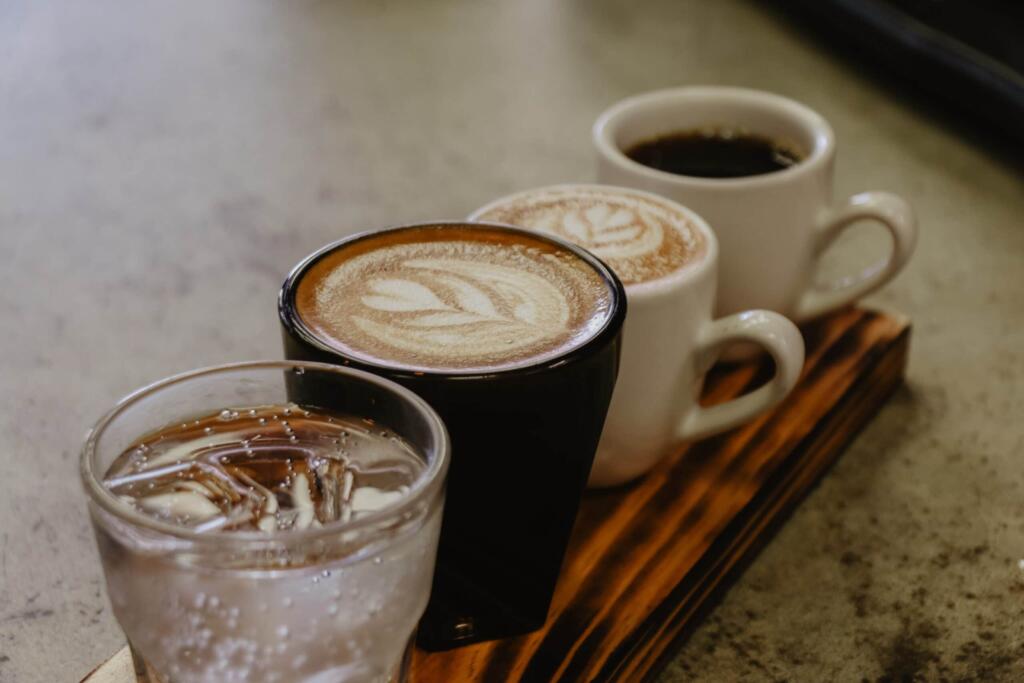
Italian Coffee Shop, Not Exactly
Whether you are traveling to Milan, Florence, Rome or Palermo; you will have excellent coffee available everywhere. It is actually difficult to find poorly made coffee here. But, you do not go to a coffee shop or a cafe to find a great cup of coffee. In Italy, everyone goes to their nearest bar for any one of their numerous daily caffeine servings. The concept of a bar is slightly different in the North America and Italy. The bar will open at 7 or 8am and although they do serve alcohol, the beverage of choice is coffee. In fact, it is virtually impossible to find a place that serves solely non-alcoholic beverages.
The “Standing” Discount
One thing that often surprises tourists when they are ordering coffee in most bars in Italy is the sticker shock difference that happens when you sit at a table. Italian law requires that all establishments post menus with prices. What many first time travelers to Italy are not aware of is that there are two separate price lists for standing at the bar, “al banco” and sitting at a table, “a tavola.” The cappuccino that is 1.20€ at the bar is 3€ at a table, so it is a good thing to be aware of.
The rules
Yes, there are a few rules to follow. These rules distinct the honorary locals from the tourists. While you can do whatever you like, we recommend you stick to the local cultural guidelines. Here are some things you need to understand before you know what, how, and when to order Italian coffee.
- A café or coffee shop that we commonly know is called a “bar” in Italy. The majority are no-name, family-run businesses with just a “BAR” sign.
- Most bars require that you pay first, then go to the counter to order.
- There are no sizes for coffee here. You get what you get.
- There are two prices in bars: al banco price, at the counter, and al tavolo price, at a table.
- Italians spend max 5 minutes in a bar. They enjoy coffee while standing at the counter. Try to save some euros while acting like a local!
- There are no super-size portions. Every drink has its own specific kind of cup or glass.
- A complimentary glass of water accompanies coffee. If not give to you automatically, feel free to ask.
- Coffee is normally enjoyed at the bar. There is no such thing as taking a coffee “to go.”
- If you order a latte, no one will understand what you want, and they will probably serve you a glass of simple milk. In order to have a latte, you must ask for a caffe latte, which is the Italian equivalent.
With that in mind, now let’s have a look at various famous Italian coffee.
The classic coffee of Italy
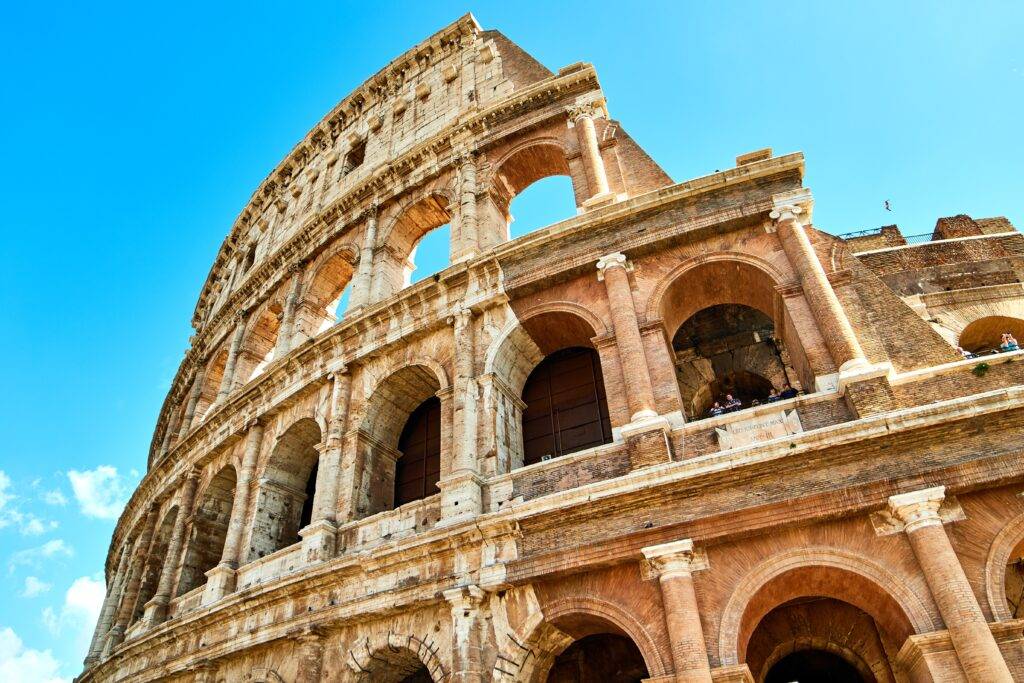
Cappuccino kahp|poo|CHEE|noh
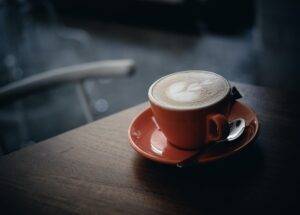
No doubt cappuccino is one of the famous coffees in Italy. It is basically ⅓ steamed milk, ⅓ espresso, and ⅓ foam. Italians sip this brew before 11 am because they consider a cappuccino a meal itself. However, you can sip a cappuccino in Italy anytime you please.
Caffè kahf|FEH
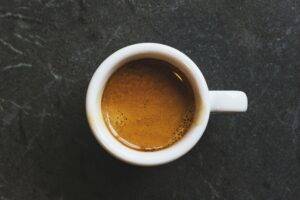
This one is served in a tiny cup and drank all throughout the day. Note that while caffè literally means coffee, it is also a shot of espresso. So, when ordering, you order un caffè and not un espresso.
You can also order caffè corretto (pronounced kahf|FEH cohr|REHT|toh). This is shot of espresso “corrected” with a shot of liquor (either cognac, grappa, or sambuca), but feel free to ask for your desired liquor. A shot of Irish cream added is always tasteful!
Macchiato mah|KYAH|toh
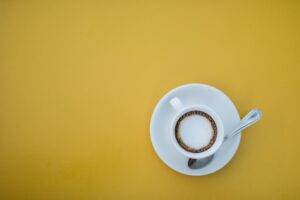
A macchiato is simply an espresso with a drop or two of hot milk and served in the same little cup that an espresso comes in. Since it is slightly foamy compared to cappuccino, Italians have no problem enjoying it any time of the day.
Caffè al Ginseng kahf|FEH ahl gin|SEHNG

If you crave chai tea latte while in Italy, the closest brew that can leave your taste buds thankful is a caffè al ginseng. It is simply espresso prepared with ginseng extract. No additional sweetener is required. Naturally, Ginseng boosts your energy, keeps you alert, and helps with digestion making it acceptable after lunch or dinner.
Café Corretto

This spiked Italian coffee pairs a splash of liquor (often different varieties of rum, grappa, mistral, or brandy) and a shot of espresso. The brew is supposed to have a dominant, rich coffee flavor and not to be overpowered by strong liquor.
These drinks are served separately, allowing guests to combine it to their liking. Outside Italy, this drink goes by other names such as espresso corretto, and carajillo.
Caffè Latte kahf|FEH LAHT|the

Latte one is equal parts milk and espresso. It is 2/3 heated milk, ⅓ espresso, and a little foam. Because it is milkier, Italian would also have this before 11 am, just like cappuccino.
Bonus! What American calls latte is a caffè latte in Italy. If you order a latte in Italy, you might end up been served a tall glass of milk!
Ristretto
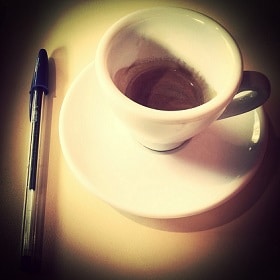
Ristretto is simply half of a single shot of espresso. That means it is less bitter than regular espresso. It also differs from a regular espresso in the amount of water used. When brewed with an espresso machine, the regular amount of finely ground coffee is extracted with half the amount of water used for classic espresso. The resulting brew is more concentrated with a different balance of compounds than in standard espresso.
Ristretto is reminiscently dark chocolate, while the crema is much lighter than in regular espresso. It is normally served straight in a demitasse cup.
Marocchino mah|rohk|KEE|noh
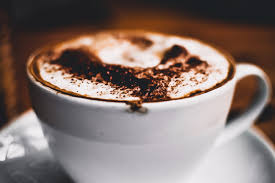
Moracchino is as a result of a marriage of espresso and cocoa and is slightly milky than a macchiato. Basically, marocchino is a layer of foam, a shot of espresso, and a sprinkle of cacao powder in a glass mug that has been dusted with cocoa powder. Sometimes espresso is mixed with thick hot chocolate, and then a layer of foam is poured on top.
Shakerato shay|keh|RAH|toh
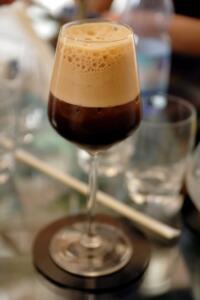
Shakerato shay is a perfect brew to grab in the months of summer. It is very tasteful and perfectly acceptable to sip it before 11 am. It is prepared by pouring chilled espresso over ice and shaking to a froth.
Caffè d’Orzo kahf|FEH dee ORT|zoh

If you love decaf coffee, Caffè d’orzo won’t let you down if you have issues with caffeine. It is also a great choice for children that like to drink coffee. You can have your cup added citrus to improve its flavor.
Bicerin
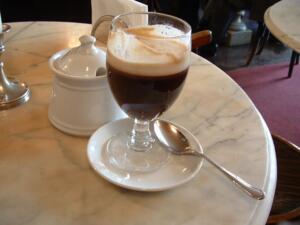
Bicerin dates back to the 18th century and consists of an espresso that is layered with hot chocolate, and then topped with whipped cream. It is often prepared and served in tall, clear glasses, and all 3 layers should be visible.
Although it is from Turin (and enjoyed throughout Turin), Caffè Florio and Caffè Al Bicerin claim its origin. It is thought its name stems from the term bicchierino, which is a diminutive of bicchiere (glass).
The flavor
As a matter of fact, the quality of Italian coffee never changes irrespective of where you are. Italians do everything to maintain consistency. So be sure you will taste the same coffee regardless of the bar you visit.
How to Order Coffee in Italy
Language differences come into play here, as does the effective marketing that Starbuck’s has done. So essentially what follows is the “translation” of all the typical coffee beverages.
- Espresso—The word espresso can be used in tourist oriented places because they are accustomed to it, but it is actually the name of a newspaper here. People order a caffe.
- Macchiato—This is exactly the same as Starbuck’s, an espresso with a dollop of steamed milk.
- Latte—Order a CAFFE latte, an espresso with steamed milk, because if you order a latte you are ordering a glass of milk. They come in a single size.
- Cappuccino—Cappuccino, but be aware that they tend to be made with less milk than in the US. As with a caffe latte, they come in one size.
- American coffee—Drip brewed coffee is not generally available outside of hotel restaurants.
- Americano—Espresso diluted with water is the same as in the US and is the closest thing to regular American coffee you will generally find. A single caveat—if you are ordering in the afternoon or evening clarify that you are not ordering the cocktail Americano.
To make your life easier, be aware that non-fat and low-fat milk is generally not used and in many bars simply not available. Decaf is generally available, but is very infrequently used so ordering it may result in some difficulty. If you want to look like a local do not order cappuccinos after lunchtime. Also be aware that a cafe corretto is always available to ease the pain of a little too much vino rosso the night before. An espresso with just a slight splash of the liquor of your choice.
Conclusion
Italian coffee inspired the trend that took the coffee drinking public by storm, and for good reason. The coffee in Italy is a flavor experience that all lovers of caffeinated beverages should experience at least one time in their lives.
Which is your favorite Italian coffee, and why? Let us know in the comment!

Editorial Staff
The editorial staff at Crazy Coffee Crave is a team of coffee enthusiasts & Baristas who enjoy the one thing we all think about as soon as we get up in the morning. Trusted by thousands of readers worldwide.



